Clogged Oil Filter: What Happens and How to Fix It
What Does the Oil Filter Do?
An oil filter protects your car’s engine by trapping dirt, metal particles, and other harmful contaminants from the oil. It ensures that only clean oil circulates through the engine, reducing internal friction by up to 25%, improving fuel efficiency by 3–5%, and extending engine life by several thousand kilometers.
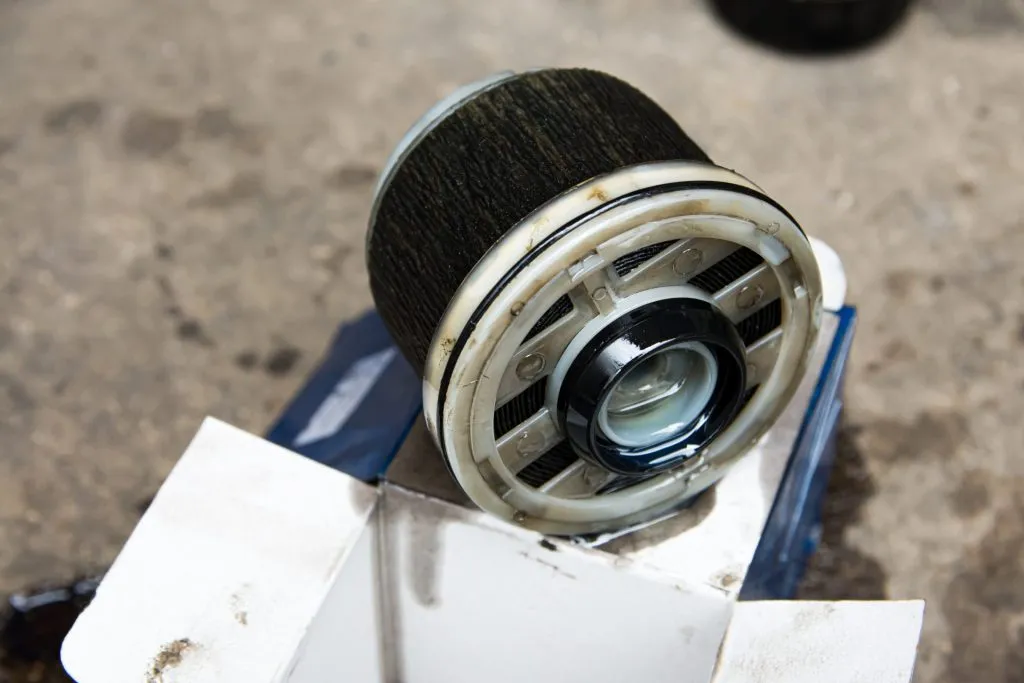
What Causes a Clogged Oil Filter?
A clogged filter sends unfiltered oil through the engine, often because the oil has become old or dirty and is overloaded with contaminants. As oil circulates, it picks up dust, dirt, metal shavings, and other particles that the filter is meant to trap. Over time, the filter can lose its ability to function properly.
Another source of clogging is the residue from burned fuel, particularly in engines that run hot or have combustion issues. This residue thickens the oil and contributes to the buildup inside the filter.
Using low-quality oil or a poorly made oil filter can also lead to clogging, as they may not effectively trap contaminants or may break down more quickly under engine stress.
When the filter becomes clogged, oil flow is restricted, leading to insufficient lubrication. This can disrupt the engine’s smooth operation and potentially cause serious damage. That’s why timely car engine repair and regular oil and filter changes are essential to keep your engine protected and running efficiently.
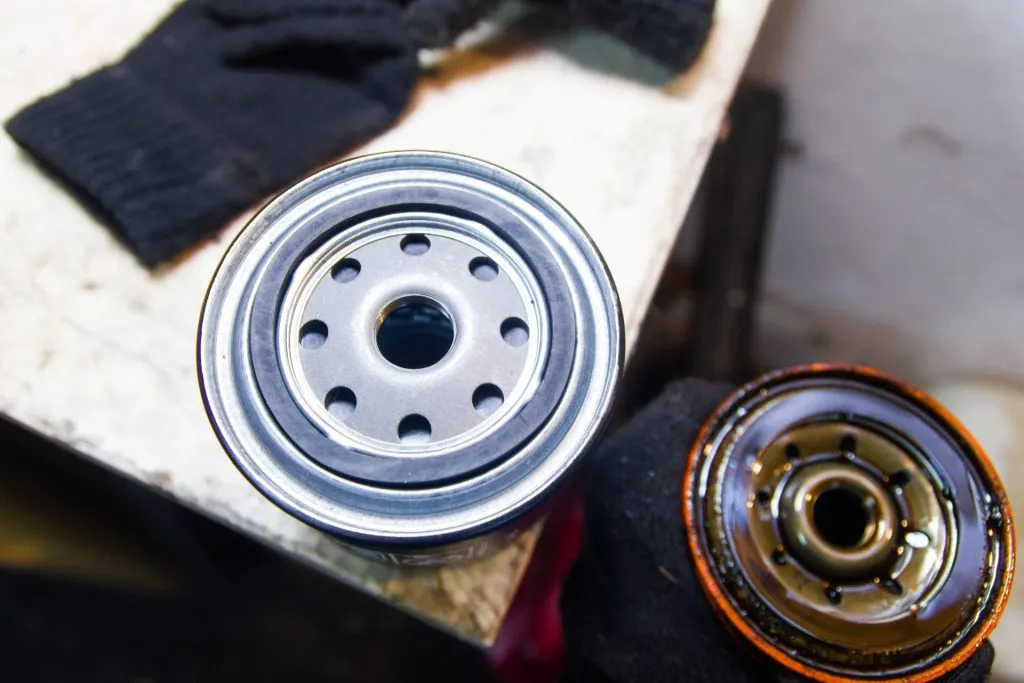
Signs of a Clogged Oil Filter
Although it’s not always obvious, your car will often show warning signs when the oil filter is no longer functioning properly.
- Reduced engine performance: A clogged oil filter restricts oil flow, resulting in poor engine lubrication. This can cause sluggish acceleration, loss of power, or rough idling as the engine struggles to run efficiently.
- Low oil pressure: When the filter is clogged, oil may not reach critical engine components, causing the oil pressure gauge to drop.
- Unusual engine noises: Insufficient oil flow can lead to engine parts rubbing against each other, producing ticking, knocking, or grinding noises, especially during start-up or acceleration. These sounds indicate that components are wearing out quickly, and continued driving can lead to severe internal damage or complete engine failure.
- Dark exhaust smoke: If the oil filter fails to trap contaminants, unfiltered oil can burn inside the engine. This may result in dark or dirty exhaust smoke, signalling potential filtration or combustion issues. Such smoke is also caused by a rich air-fuel mixture.
- Engine overheating: Engine overheating: Clean oil helps regulate engine temperature by reducing friction. If oil flow is restricted due to a clogged filter, lubrication to critical components may be insufficient. This increases internal friction and heat, which can overload the cooling system and contribute to engine overheating over time.
To avoid these risks, it’s important to follow your vehicle manufacturer’s recommendations and the regular oil filter changes according to the maintenance schedule.
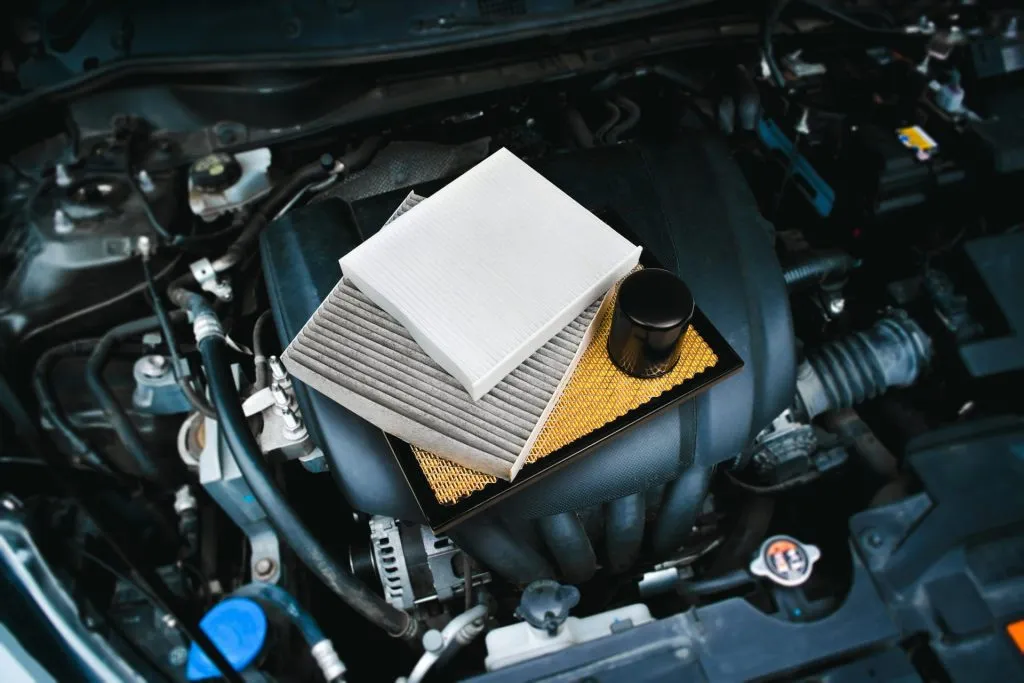
What Happens If the Oil Filter Becomes Completely Blocked?
When the engine oil filter becomes severely clogged, it can no longer remove contaminants, which disrupts the oil flow and affects engine performance. This situation poses several risks that can impact engine parts and lead to long-term damage.
To prevent a lack of lubrication, most modern motors are equipped with a bypass valve. When the filter is clogged, this valve activates to maintain oil flow, allowing motor oil to continue circulating and preventing the engine from running dry. However, this also means unfiltered oil is flowing freely, putting the engine at risk.
If the bypass valve fails or the differential pressure becomes too great, oil may not reach critical engine components like the camshaft, pistons, or bearings. This lack of lubrication leads to increased friction, excessive heat, and accelerated wear.
Warning signs, such as the oil or engine light, may appear on the dashboard, indicating the need to have your car checked.
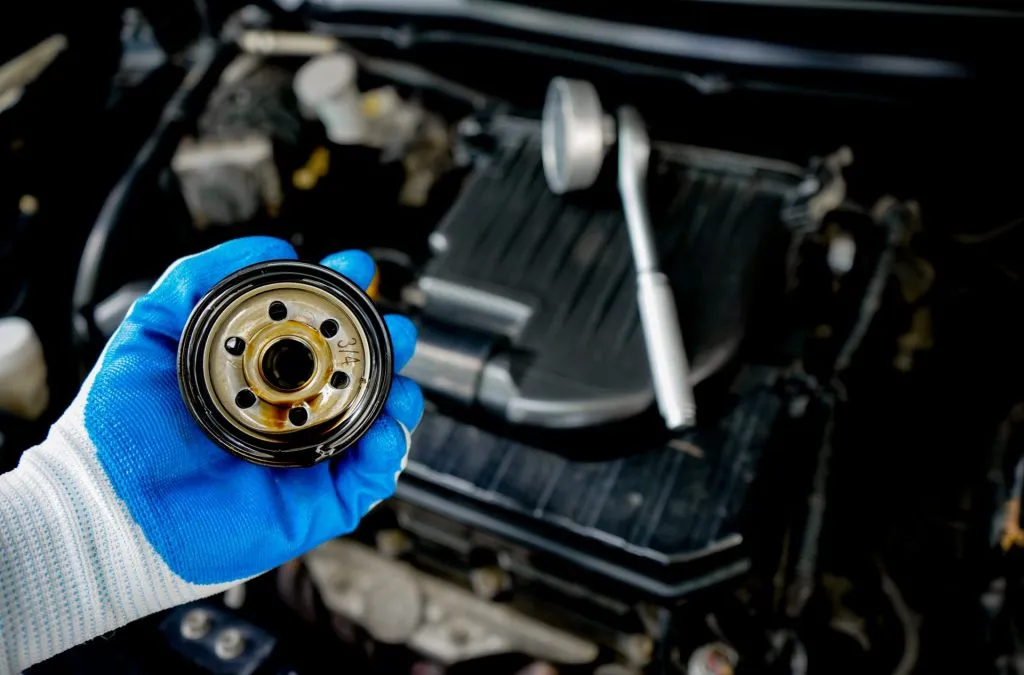
How to Fix a Clogged Oil Filter
- Common warning signs include the oil light or check engine light turning on, reduced oil pressure, unusual engine noises, overheating, or dark exhaust smoke, indicating potential problems in the combustion process. If these signs are present, performing an oil change and replacing the clogged filter is important.
- Start by draining the old oil, then remove the clogged filter using a filter wrench.
- Before installing the new filter, apply a small amount of clean oil to its rubber gasket to ensure a proper seal.
- Once the new filter is in place, refill the engine with fresh oil, start the vehicle, and let it run briefly to allow the oil to circulate.
- Finally, check for leaks and continue to monitor engine operation.
If the car has been running for a long time with a clogged filter, it’s recommended to have a mechanic inspect it for possible internal damage. Regular maintenance is the best way to avoid this problem in the future.
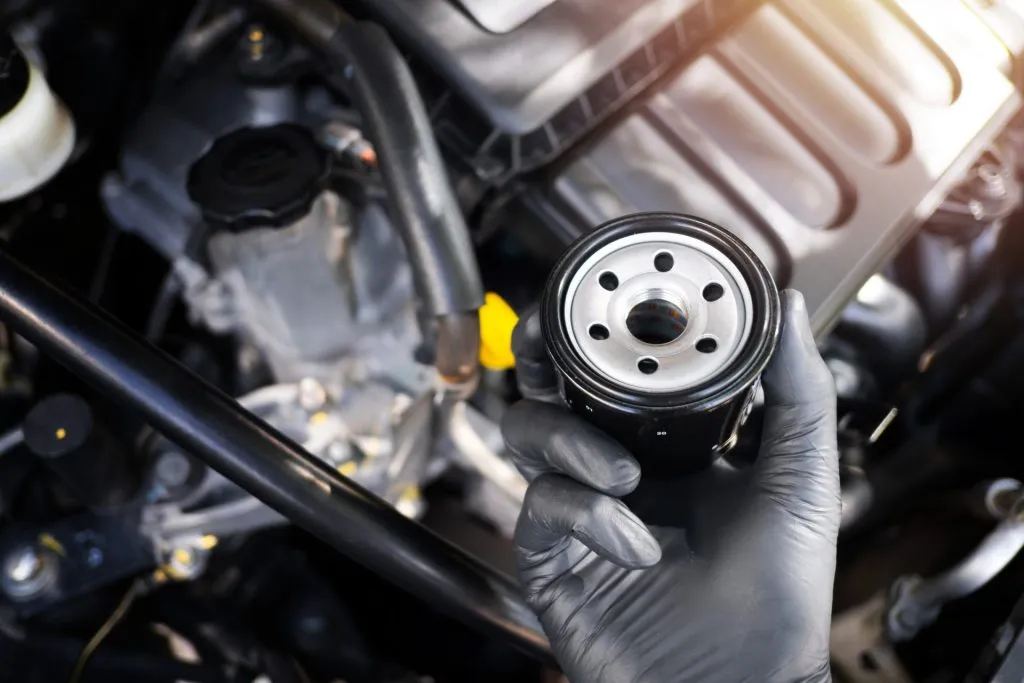
Can You Clean a Clogged Oil Filter?
In most cases, you should not attempt to clean a clogged oil filter, especially if it’s a standard disposable type. These filters are designed for single use only and aren’t intended to be disassembled, cleaned, or reused. Attempting to clean them can damage the internal filter material and reduce their ability to effectively trap contaminants.
Even if some residue can be removed from the surface, the sludge, metal particles, and microscopic dirt accumulated inside cannot be completely cleaned out. Reusing a damaged filter can lead to poor oil circulation, increased engine wear, and even complete filter failure.
The best and safest option is to replace the entire oil filter.
If you’re using a reusable or high-efficiency oil filter, these are designed to be cleaned and reinstalled, but they require proper cleaning methods and special attention to ensure they function correctly.
For most drivers using standard filters, replacement is the right choice to maintain clean oil and optimal engine performance.
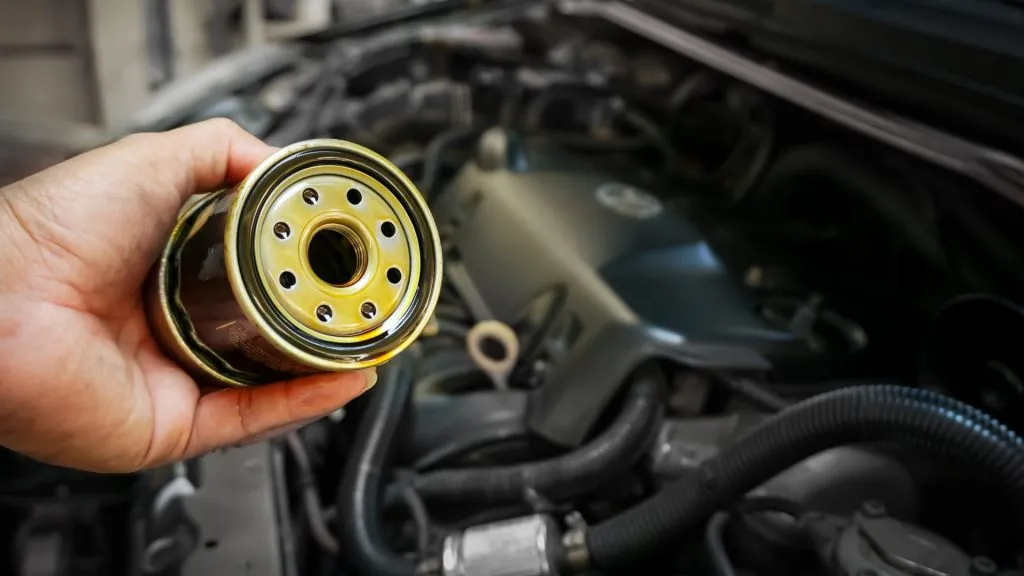
How Often Should You Replace the Oil Filter?
How often you should replace your car’s oil filter depends on several factors, including your car manufacturer’s recommended interval, your driving habits, and driving conditions. In general, most mechanics recommend changing the oil filter every time you change your engine oil, which is usually 5,000 to 7,500 miles (8,000 to 12,000 kms) with regular oil.
With synthetic oils, some cars can go longer, up to 10,000 to 15,000 miles, but it’s important to always check your owner’s manual.
If you frequently drive in harsh conditions, extreme temperatures, dusty environments, stop-and-go traffic, or tow heavy loads, you may need to replace your car’s oil filter more frequently. These conditions cause the filter to collect contaminants more quickly, reducing its effectiveness.
How to Prevent Oil Filter Blockage
Preventing oil filter clogging starts with regular maintenance.
Using high-quality engine oil also plays an important role. Premium oil resists wear and helps reduce the buildup of harmful deposits that can clog the filter.
Combining high-quality oil with the correct filter for your car helps maintain optimal flow and ensures reliable engine protection.
Additionally, checking for signs of contamination or unusual wear during routine servicing can help detect problems early, before they lead to filter clogging.




